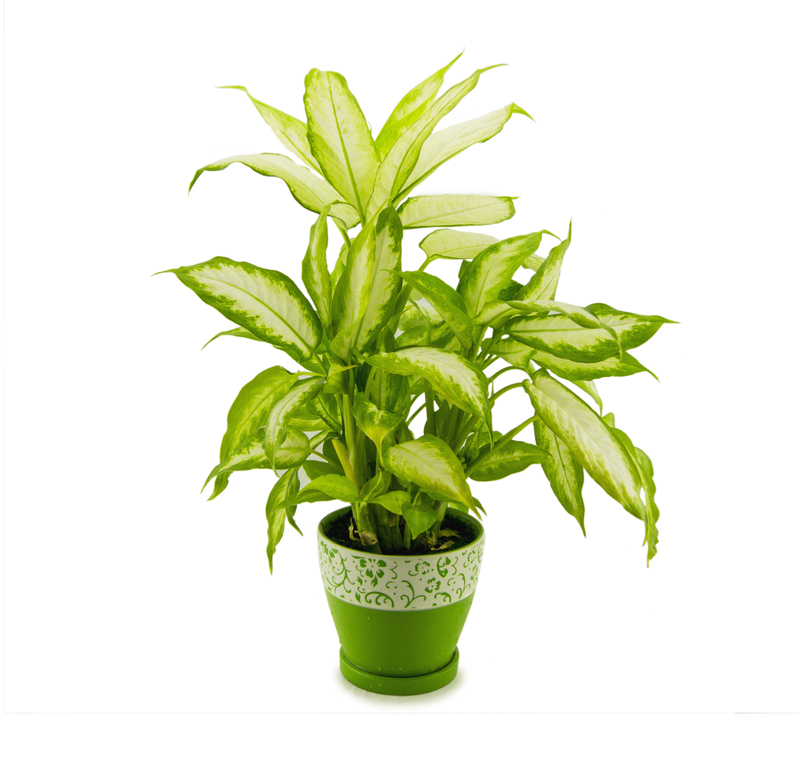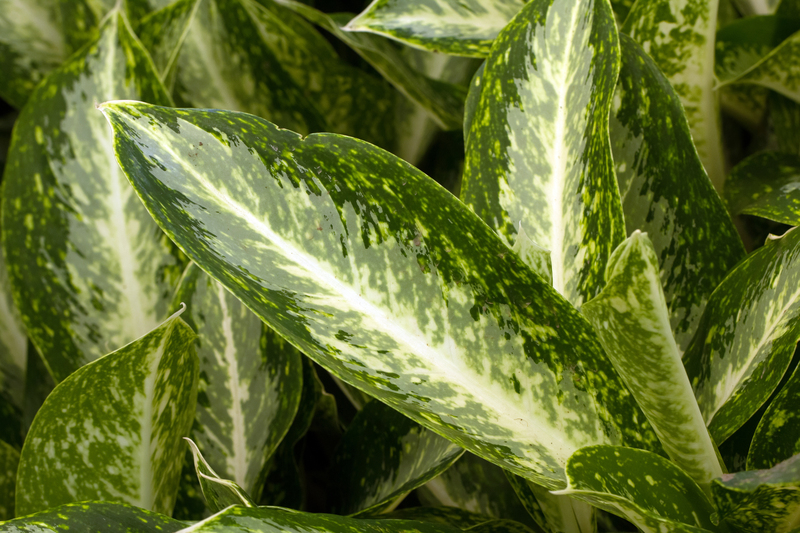Eco-friendly Earth: Gardening's Climate Change Impact
Posted on 22/08/2025
Eco-Friendly Earth: Gardening's Climate Change Impact
The world is waking up to the climate crisis, and as individuals, many are searching for tangible ways to minimize their ecological footprint. While large-scale changes are critical, individual actions also matter. Among the most effective and rewarding of these is gardening. Far from being just a pleasant hobby or aesthetic pursuit, eco-friendly gardening cultivates a healthier environment and plays a pivotal role in combating climate change. This article will delve into the profound impact that gardening--especially when executed with sustainability in mind--can have on our planet, share practical tips for climate-resilient gardening, and explore fresh perspectives on gardening's contribution to an eco-friendly Earth.

Understanding Climate Change and the Role of Gardening
Climate change, spurred primarily by the emission of greenhouse gases from human activity, threatens life on Earth by raising global temperatures, disrupting weather patterns, and intensifying natural disasters. A significant factor in combatting this challenge is the restoration and preservation of green spaces--areas where plants photosynthesize, capturing atmospheric carbon dioxide (CO2) and sequestering it in their roots, stems, and leaves.
Gardening offers a practical, localized response. When nurtured sustainably, gardens can:
- Absorb CO2: Plants pull this greenhouse gas from the air, reducing overall atmospheric concentration.
- Foster Biodiversity: Gardens serve as crucial habitats for bees, butterflies, birds, and other creatures, supporting ecosystem health.
- Conserve Water: Sustainable gardening techniques prioritize water efficiency, preserving this vital resource.
- Improve Soil Health: Healthy soil acts as a carbon sink and supports diverse plant life.
- Reduce Urban Heat: Green spaces mitigate the urban heat island effect.
Why Choose Eco-Friendly Gardening?
Traditional gardening may inadvertently harm the environment--use of synthetic fertilizers and pesticides, excessive water, and fossil-fuel run tools all contribute to greenhouse gas emissions. In contrast, sustainable, eco-friendly gardening leverages techniques that regenerate soils, minimize emissions, and create habitats beneficial to pollinators and other wildlife. This approach not only produces edible crops and beautiful landscapes but also contributes to the broader mission of fighting climate change.
The Climate Benefits of Sustainable Gardening Practices
Carbon Sequestration: How Gardens Capture Carbon
One of the most crucial impacts of eco-friendly gardening is its capacity for carbon sequestration. Each plant you grow captures CO2 through photosynthesis and stores it in leaves, trunks, roots, and surrounding soil. Woody perennials, trees, and shrubs are especially efficient at this, making them excellent choices for climate-conscious gardeners.
- Native trees and shrubs store more carbon over their lifetimes compared to annuals.
- Deep-rooted plants strengthen soil and increase long-term carbon storage.
- Adding organic matter--like compost--boosts soil microbial activity, helping sequester additional carbon.
Pro Tip: Integrate perennials and native plants into your landscape to maximize your garden's carbon capture potential.
Biodiversity: A Solution to Climate Resilience
A diverse garden ecosystem is inherently resilient. By incorporating a wide range of plant species, especially native varieties, gardeners cultivate habitats that nurture a spectrum of pollinators and beneficial insects. Biodiversity ensures ecosystems can withstand disturbances, which is vital as climate patterns become less predictable.
- Pollinator-friendly plants attract bees, butterflies, and hummingbirds, supporting natural food webs.
- Diverse plantings can control pests naturally, reducing the need for chemical inputs.
- Dense, layered plantings protect soil from erosion and help retain moisture.
Water Conservation and Efficient Use
Climate change impacts water availability. Eco-friendly gardening focuses on water-wise practices that protect this precious resource.
- Rainwater harvesting: Collecting rainwater in barrels reduces reliance on municipal supply.
- Mulching: Applying organic mulch conserves soil moisture, reduces evaporation, and moderates soil temperature.
- Drip irrigation: Slow, targeted watering systems minimize waste and support plant health.
Tip: Choose drought-tolerant and native species for a garden that thrives with less water and maintenance.
Soil Health: Building a Foundation for Climate Action
Healthy soils are teeming with life--from bacteria and fungi to worms and insects. These organisms break down organic material, storing carbon and supplying nutrients to plants. Traditional gardening often degrades soil health through excessive tilling or chemical inputs, but regenerative gardening reverses this trend.
- Composting recycles food and yard waste, reducing landfill emissions and enriching garden beds.
- No-dig gardening preserves soil structure and enhances **carbon storage**.
- Cover cropping regenerates depleted soils and prevents erosion.
Reducing the Urban Heat Island Effect
Densely built cities absorb and retain more heat than green, vegetated areas. This "urban heat island" effect leads to higher air temperatures, more significant energy consumption for cooling, and increased greenhouse gas emissions. By cultivating lush green gardens--on the ground, rooftops, balconies, and even vertical spaces--individuals can meaningfully lower temperatures and make cities more livable for all.
- Trees and tall plants create shade, reducing resident heat and cooling costs.
- Green roofs and walls insulate buildings, lessening energy demand.
- Community gardens foster green corridors that cool entire neighborhoods.
How to Start an Eco-Friendly, Climate-Positive Garden
1. Select Sustainable, Native, and Climate-Resilient Plants
Opt for plants well-suited to your local climate and soil. Native species typically require less water, are more resistant to pests, and support local wildlife. They're a vital cornerstone for a garden that helps mitigate climate change.
- Speak with your local garden center or agricultural extension for native plant lists.
- Include perennial vegetables and herbs that come back year after year.
- Mix plant heights, flower colors, and leaf shapes to encourage biodiversity.
2. Compost Waste and Use Organic Amendments
Instead of sending kitchen scraps and yard waste to the landfill, turn them into nutrient-rich compost. Composting reduces methane emissions from waste dumps and empowers your plants to grow stronger and healthier.
- Compost piles, tumblers, or worm bins work in almost every garden space.
- Enrich soil with composted material, natural mulches, and organic fertilizers.
- Avoid chemical fertilizers, which often require fossil fuels for production and contribute to water pollution.
3. Water Wisely
Climate-smart gardens conserve water. Group plants with similar needs, collect rainwater, and schedule watering for early morning or late evening to minimize evaporation.
- Use soaker hoses or drip irrigation for efficiency.
- Add mulch around trees, shrubs, and flowers to hold in moisture.
- Design swales or rain gardens for capturing and filtering stormwater.
4. Avoid Pesticides and Chemicals
Minimize or exclude the use of synthetic chemicals. These damage beneficial insect populations, contaminate water, and degrade soil health.
- Encourage natural predators like ladybugs, birds, and spiders.
- Hand-pick pests or use barriers and traps.
- Apply organic alternatives, such as neem oil or insecticidal soaps, only when absolutely necessary.
5. Practice No-Dig or Low-Till Gardening
Tilling aerates soil at a cost--releasing stored carbon and disturbing its intricate life web. Adopting a no-dig approach improves soil structure, water retention, and carbon sequestration.
- Lay compost and mulch directly on soil instead of turning it.
- Grow cover crops to naturally aerate and nourish the earth.
- Plant densely to suppress weeds and protect soil organisms.
6. Incorporate Trees and Shrubs
Integrating woody plants--both fruiting and ornamental--greatly expands your garden's climate impact. Trees absorb more carbon and provide essential benefits like shade, habitat, and food.
- Select disease-resistant varieties suited to your zone.
- Space trees to allow for mature growth, maximizing canopy cover.
- Try companion planting to support tree health and productivity.
The Social and Economic Dimensions of Eco-Friendly Gardening
Food Security and Local Agriculture
Growing your own food reduces reliance on industrial agriculture, which is responsible for a significant share of global greenhouse emissions. Fewer food miles, better soil health, and the elimination of packaging collectively add up to dramatic carbon savings.
- Homegrown fruits and vegetables are fresher, tastier, and more nutrient-dense.
- Community gardens foster connection and provide accessible food sources.
- Children learn stewardship, nutrition, and life skills by participating in gardening.
Mental Health, Well-being, and Community
Beyond the ecological benefits, gardening nurtures human health. Interacting with nature lowers stress, boosts mood, and inspires eco-conscious habits. Community gardens and shared spaces connect neighbors and empower collective climate action.
- Gardening is linked to decreased anxiety and depression.
- Shared green spaces build resilience and encourage local collaborations.
- Urban farming initiatives combat food deserts and inequality.
Economic Benefits
An eco-friendly garden saves money in more ways than one: reduced grocery bills, less spending on water or synthetic inputs, and potential value additions through produce sales or eco-tourism. Green spaces also boost property values.
- Invest in perennials for year-over-year savings.
- Share or trade surplus with neighbors, building a circular economy.
- Engage with local markets for sustainable gardening tools and seeds.

Innovations: How Technology and Science Enhance Eco-Friendly Gardening
Smart Gardening for a Greener Earth
Modern technology is making sustainable gardening even more impactful. Smart irrigation systems, solar-powered garden tools, and online platforms for seed and produce sharing all boost efficiency. Apps can help track plant health and remind you when to water-- reducing waste and fostering optimal growth.
- Monitor soil moisture and weather forecasts to avoid overwatering.
- Use online databases to select the best plants for your climate.
- Connect with global growers for innovative sustainable gardening practices.
Urban Gardening: Expanding Green Space
Cities around the world are transforming empty lots, rooftops, and even building walls into thriving gardens. Urban gardening not only offsets emissions but also improves urban livability, biodiversity, and climate resilience for an eco-friendly Earth.
- Vertical gardens maximize limited space and purify the air.
- Edible landscapes supply fresh produce right where it's needed.
- Green corridors promote pollinator movement and greater biodiversity.
Conclusion: Planting for the Future - The Lasting Impact of Gardening on Climate Change
Every garden, regardless of its size, contributes to creating a more eco-friendly Earth. The cumulative effect of millions of backyard, balcony, and community gardens can help restore ecological function, capture carbon from the atmosphere, and create resilient towns and cities. As a gardener, you are not just cultivating plants--you're nurturing the lungs of our planet, empowering biodiversity, and inspiring others through your example.
Small seeds develop into lush landscapes. By choosing eco-friendly gardening practices, each of us participates in the monumental task of protecting the planet for future generations.
Start your sustainable garden today and join the global movement toward a healthier, greener world.



